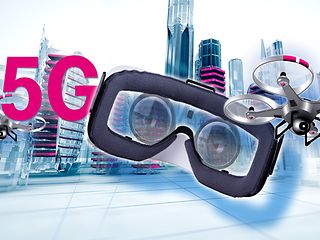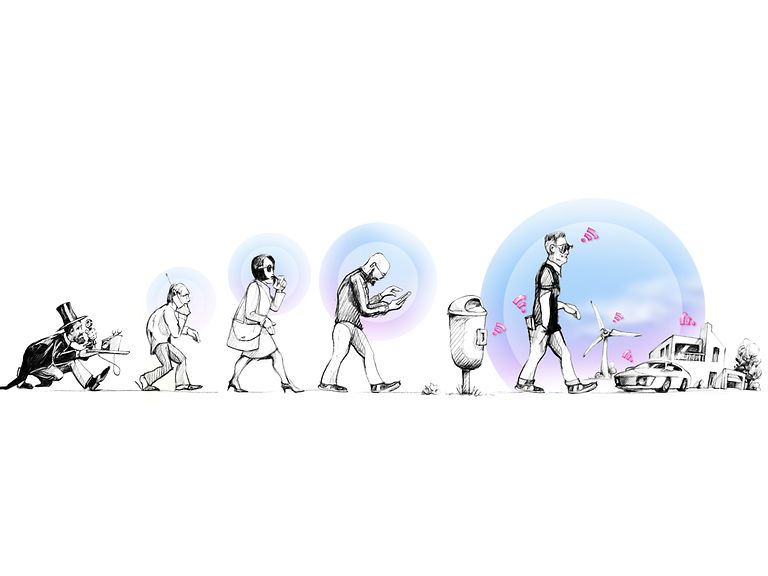 5G is enabling the Internet of Things. Cars, heating systems, and even trash cans are becoming involved in the net, posing completely different challenges than flesh-and-blood network users. So what’s behind it all? 5G made simple.
5G is enabling the Internet of Things. Cars, heating systems, and even trash cans are becoming involved in the net, posing completely different challenges than flesh-and-blood network users. So what’s behind it all? 5G made simple.
From our knowledge of simple math, we’re well aware that four is generally followed by five. Many people apply this principle to the succeeding generations in mobile communication and their successive technology standards. And up until the fourth generation, all went according to that logic in terms of technology content. 2G brought mobile telephony up to scratch. At the 3Gstage, one got the first inklings that a system by the name of WAP would not be enough for mobile data transmission.
A new era of communication
4G made broadband connections possible for smartphones and tablets, bringing in a new era of communication. That 4G standard was also called LTE – Long Term Evolution. And the name was meant literally, because 4G is nowhere near maxed out yet; the needs of most users are expected to be provided for the foreseeable future on the basis of this fourth generation of mobile technology.
New generation in 2020
However, it is not just in the telco sector, but in the political, industrial and media worlds that one is hearing of the next generation – 5G – with ever greater frequency. And things are set to get going with that new generation in 2020. In Asia, North America and Europe, people are taking constant soundings as to how far we are already down the road to this new generation. But who is this new coming technology designed for, if people are likely to remain happy for the foreseeable future with the generation that came before it?
5G is what makes the Internet of Things possible
Maybe the question could be better formulated as ‘what is it designed for?’ Well, 5G is what makes the Internet of Things possible. Cars, heating systems, and even trash cans are becoming active in the net, posing completely different challenges than the needs of flesh-and-blood Internet users. The goal of 5G is to perform a balancing act to provide precisely the sort of network needed for all the various user needs required of that network. And that cannot be achieved by simply deploying additional technology on top of what is already there. The conceptual design according to which this new technology, but also the entire existing infrastructure, is deployed now needs to change.
Thousands of sensors
Making that change will make it possible, for example, to improve traffic safety on our streets, as new technology can inform cars of possible risks ahead of them in a tiny fraction of the blink of an eye. While travelers are waiting for their suburban underground train, the film they want to watch starts up almost immediately after they touch their smartphone and yet, at the same time, tens of thousands of sensors send out short status messages on their individual functions at regular intervals.
 Nothing less than a revolution
Nothing less than a revolution
It is in such capacities that it becomes clear why the technologies from 2G to 4G differ so radically from the fifth generation and that what is awaiting us is partly a new beginning and partly a turning point, but certainly nothing less than a revolution.
5G is one of many topics of Deutsche Telekom around the future digital society at the Mobile World Congress in Barcelona. Visit our booth 3M31 in hall 3 from February 26 – March 1. We look forward to welcoming you.






